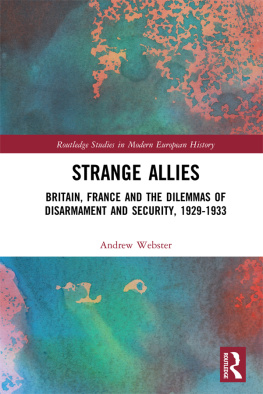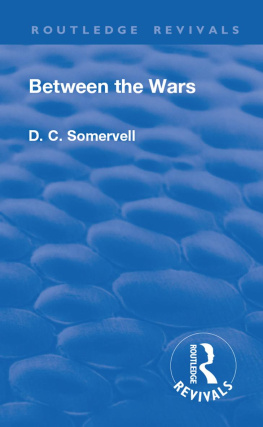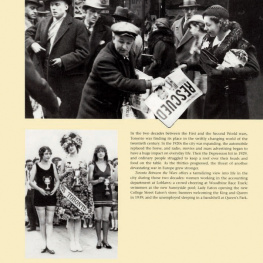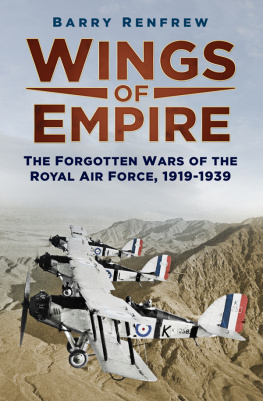
Political and Military Leadership in the World Wars
This book approaches the World Wars and the decades between them as a single unit in modern history. It is impossible to understand either the cause or conduct of the 193945 war without an appreciation of the issues not wholly answered in the conflict of 191418. Bridging the World Wars was the establishment, revision, and ultimate collapse of the Versailles settlement and the League of Nations system between 1919 and 1939. The 1919 settlement was contested in the 1920s by Fascist Italy and began to unravel irreparably in 1931 with Japans incursion into Manchuria. The strategic thought of the interwar years is therefore especially instructive in assessing the prosecution of World War II, as the military ventures of these two revisionist powers pointed toward future developments even before Germany thrust a new way of war upon Eastern and Western Europe. Meanwhile, Britain, France, and the United States began an incremental conversion to new approaches to war in the air and on the sea in particular. The interwar decades are best understood as a period of calibrated rearmament by all the powers based on assumptions about the probability of a future war and the nature of its prosecution.
Carl Cavanagh Hodge is a Professor Emeritus of Political Science at the University of British Columbia-Okanagan.
Routledge Studies in Modern History
Ruler Personality Cults from Empires to Nation-States and Beyond
Edited by Kirill Postoutenko and Darin Stephanov
Embassies in Crisis
Studies of Diplomatic Missions in Testing Situations
Edited by Rogelia Pastor-Castro and Martin Thomas
Redefining Propaganda in Modern China
The Mao Era and its Legacies
Edited by James Farley and Matthew D. Johnson
War and Semiotics
Signs, Communication Systems, and the Preparation, Legitimization, and Commemoration of Collective Mass Violence
Edited by Frank Jacob
German-East Asian Encounters and Entanglements
Affinity in Culture and Politics Since 1945
Edited by Joanne Miyang Cho
Corporate Policing, Yellow Unionism, and Strikebreaking, 18901930
In Defence of Freedom
Edited by Matteo Millan and Alessandro Saluppo
American Planters and Irish Landlords in Comparative and Transnational Perspective
Lords of Land and Labor
Cathal Smith
Political and Military Leadership in the World Wars
The Closest Concert
Carl Cavanagh Hodge
The Ending of Tribal Wars
Configurations and Processes of Pacification
Edited by Jrg Helbling and Tobias Schwoerer
Neo-Confucianism and Science in Korea
Humanity and Nature, 17061814
Sang-ho Ro
International Society in the Early Twentieth Century Asia-Pacific
Imperial Rivalries, International Organizations, and Experts
Edited by Hiroo Nakajima
For a full list of titles, please visit: https://www.routledge.com/history/series/MODHIST
First published 2021
by Routledge
52 Vanderbilt Avenue, New York, NY 10017
and by Routledge
2 Park Square, Milton Park, Abingdon, Oxon, OX14 4RN
Routledge is an imprint of the Taylor & Francis Group, an informa business
2021 Taylor & Francis
The right of Carl Cavanagh Hodge to be identified as author of this work has been asserted in accordance with sections 77 and 78 of the Copyright, Designs and Patents Act 1988.
All rights reserved. No part of this book may be reprinted or reproduced or utilised in any form or by any electronic, mechanical, or other means, now known or hereafter invented, including photocopying and recording, or in any information storage or retrieval system, without permission in writing from the publishers.
Trademark notice: Product or corporate names may be trademarks or registered trademarks, and are used only for identification and explanation without intent to infringe.
Library of Congress Cataloging-in-Publication Data
A catalog record for this title has been requested
ISBN: 978-0-367-72099-5 (hbk)
ISBN: 978-0-367-72101-5 (pbk)
ISBN: 978-1-003-15344-3 (ebk)
Typeset in Sabon
by SPi Global, India
To the memory of Ted Price, 19512019
I would like to thank Robert Langham, Max Novick, and Yassar Arafat for their assistance in bringing this book to press. In addition, I am in the debt of Joan Irvine, Helen Cooper, and Hattie Voss for their patient assistance with the writing and editing of the manuscript. Above of all, I thank my wife, Jane Everett, for her intelligent commentary throughout the writing process.
The World Wars of the first half of the twentieth century and the twenty years of armistice separating them are properly pondered as a single unit in political and military history. World War I was the greatest trauma of modern European history. In scale and carnage it was nonetheless eclipsed by WWII, the greatest tragedy in human civilization. It is impossible to understand either the cause or the conduct of the 193945 war without an appreciation of the issues joined, yet not wholly answered, in the conflict of 191418. Whereas WWI ultimately drew in thirty-two nations and claimed fifteen million lives, WWII killed five times as many people and wrought destruction on a vastly greater scale.
In the two decades preceding WWI, all the great powers devoted extraordinary fiscal, scientific, and industrial resources to the development of military power. When the Allied and Central Powers went to war in August 1914, their comparative strengths cancelled each other out. Within weeks of its outbreak WWI degenerated into four years of mutual bloodletting without a shift in the fortunes of war tilting decisively in one direction or the other. The armistice of 1919 then established an unstable peace. Its terms were politically unsatisfactory to all the participants. Yet they were held to be so much more outrageous in Germany, Italy, and Japan that each contrived to amend or overturn them. In addition, each of these countries devoted much more attention than the victors of 1919 to providing diplomatically and militarily for the prosecution of a future war. As a consequence, the opening phases of WWII tilted the military advantage radically in their favour. Thereafter, the conflict shifted almost as quickly against them, so that by 1943 the Axis powers had virtually no chance of surviving as powers, much less prevailing over their adversaries.
The outcome of both wars was in large part the product of the superior material resources that Allied powers were able to apply to protracted military conflict. But it was also the result of superior political and military leadership. What Winston Churchill claimed of WWII that their strategy was conducted so that the best combinations, the closest concert1 characterized their conduct of fighting was also true, despite obvious circumstantial differences, of WWI. The Allied powers achieved not only a higher degree of cooperation in their combined efforts, each of them also managed a higher level of coordination between political and military leaders in determining political goals and matching strategic vision to available resources. This book therefore focuses most forthrightly on the relationship between civilian and military leaders during the World Wars and, just as critically, over the twenty-year truce between them. It is a study of the partnership of civilian political








